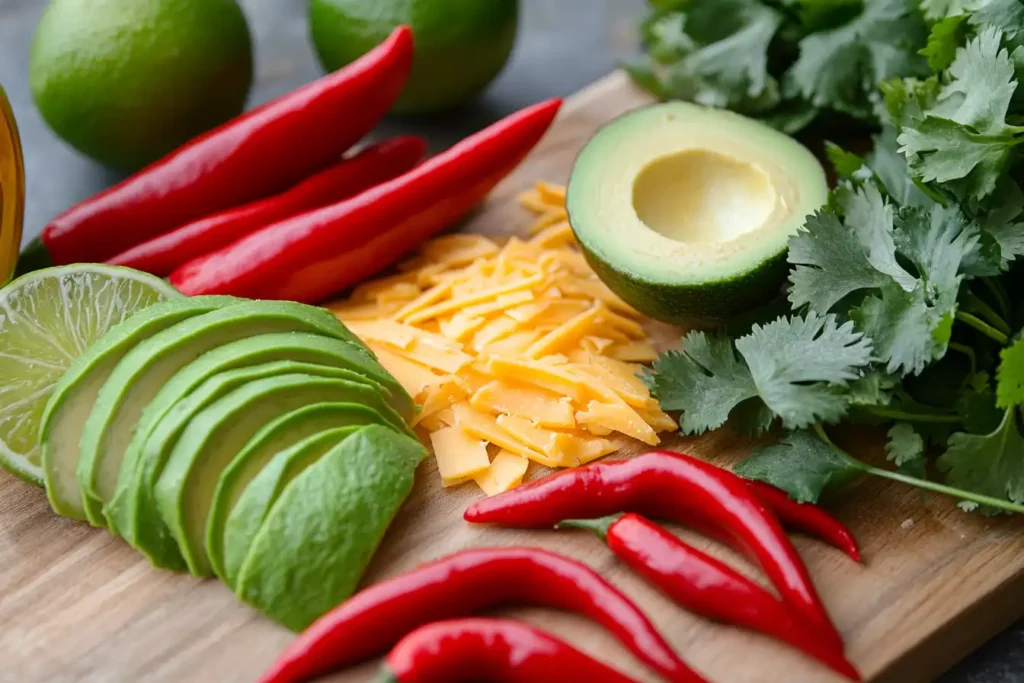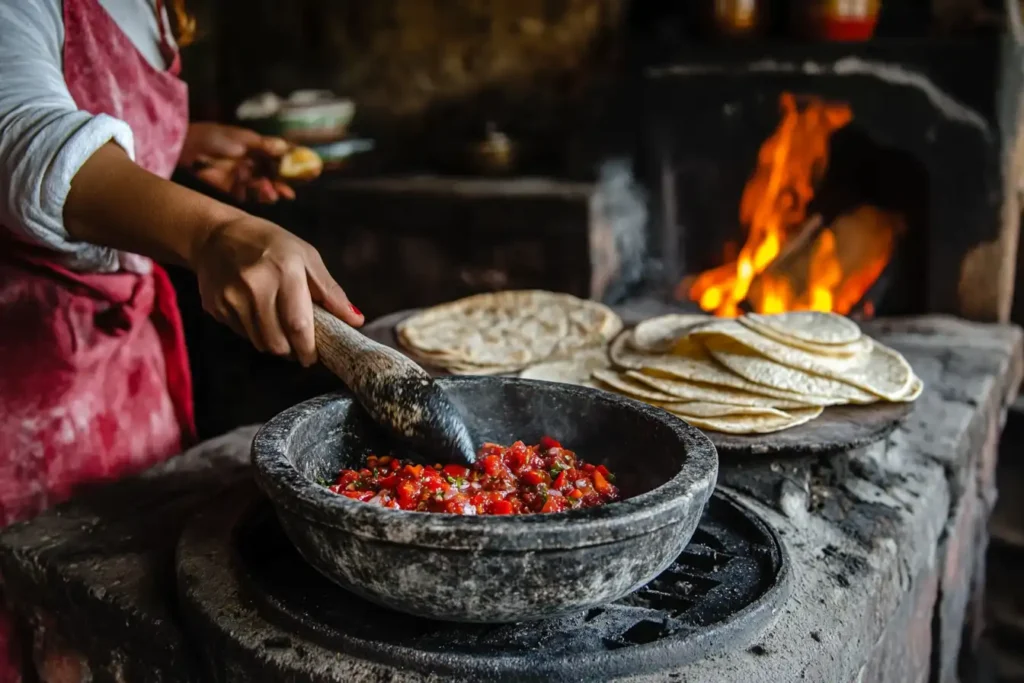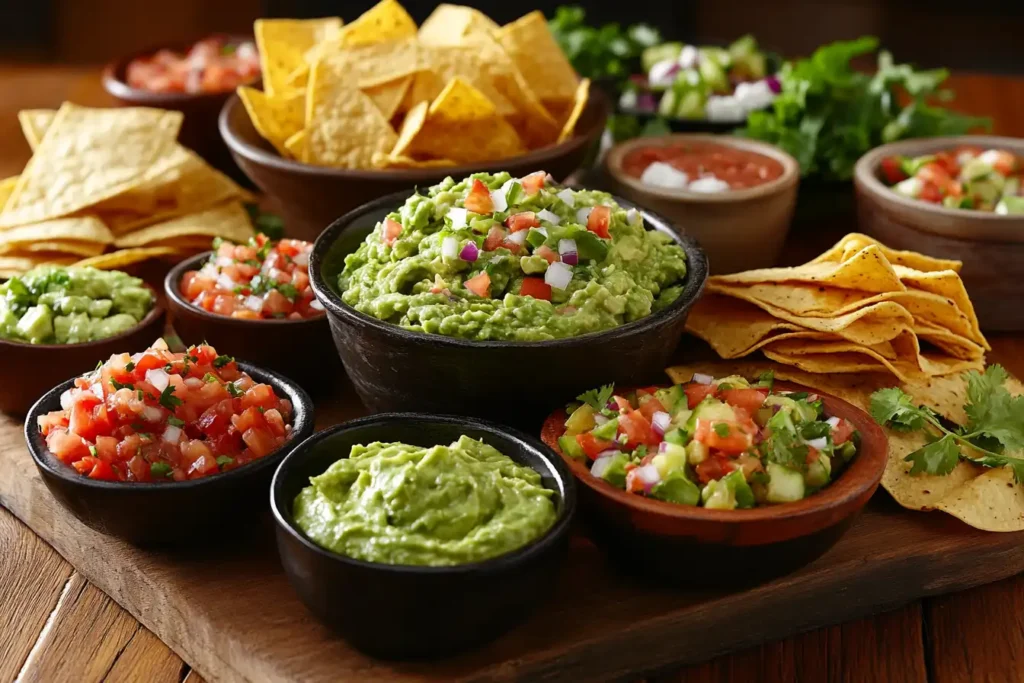La Botana, a term that captures the vibrant essence of Mexican culture, translates loosely to “snack” in English but encompasses so much more. These delicious, bite-sized treats are staples in Mexican households, gatherings, and celebrations. Beyond mere food, they represent community, history, and a love for bold flavors. This article delves deep into the world of la botana, exploring its history, types, preparation, and cultural significance. Whether you’re a food enthusiast or someone curious about Mexican traditions, there’s much to savor. Let’s dive in!
Introduction to La Botana
Definition and Meaning of La Botana
At its core, la botana refers to snacks or appetizers in Mexican cuisine, but it’s not just about what you eat—it’s about how and why you enjoy them. These small dishes are often shared among friends and family, embodying a sense of togetherness. The word “botana” itself can also carry a playful tone in Mexican slang, sometimes hinting at something light and fun, much like the snacks themselves.
These treats come in various forms, from crispy tortilla chips paired with guacamole to spicy peanuts and even complex dishes like tostadas. Whether served casually at home or as a starter in a gourmet setting, botanas offer a tantalizing preview of the rich flavors of Mexican cuisine.
Etymology and Cultural Significance of La Botana
The term “botana” has its roots in the Spanish language, where it originally referred to “bait” for fishing. Over time, it evolved to describe food that “hooks” you in—tempting you to take another bite. But in Mexican culture, botanas have transcended this simple definition.
From bustling street corners to lively cantinas, these snacks are synonymous with social connection. They’re often served alongside drinks, creating an atmosphere of relaxation and camaraderie. In Mexico, sharing botanas is not just about eating; it’s about savoring moments together, celebrating traditions, and enjoying life’s simple pleasures.
Historical Background of La Botana
Origins of Botanas in Mexican Cuisine
The roots of botanas run deep in Mexican history, reflecting the nation’s diverse culinary heritage. Indigenous communities in ancient Mesoamerica enjoyed small, shareable meals crafted from staples like maize, beans, and chilies. These ingredients laid the foundation for what would eventually become botanas. Dishes like tamales or tostadas, served in smaller portions during social gatherings, echoed the communal spirit that defines Mexican food culture.
With the arrival of the Spanish in the 16th century, Mexican cuisine experienced a transformation. Spanish settlers introduced new ingredients like wheat, dairy, and spices, which mingled with local flavors to create a unique fusion. Botanas, as they evolved, began incorporating these influences, adding layers of complexity and richness to the humble snacks.
Over the centuries, botanas became synonymous with gatherings, celebrations, and even cantina culture, where small plates were served alongside drinks. This tradition has endured, showcasing the enduring appeal of these versatile and flavorful bites.
Evolution Over Time of La Botana
As Mexican cuisine gained global recognition, so too did botanas. Initially confined to small, informal gatherings, these snacks have now found their way onto gourmet menus worldwide. While traditional botanas like salsa and guacamole remain popular, modern interpretations often feature creative twists, such as fusion flavors or premium ingredients.
In the mid-20th century, the rise of Mexican street food further propelled botanas into the spotlight. Vendors began serving these treats to urban crowds, turning them into symbols of comfort and nostalgia. Today, botanas represent a blend of tradition and innovation, with their essence rooted firmly in the joy of sharing good food with others.
Types of Botanas
Traditional Botanas
Traditional botanas are a celebration of authenticity and simplicity. These snacks rely on fresh, local ingredients and time-tested recipes to deliver bold, satisfying flavors. Examples include:
- Chicharrones: Crispy pork rinds seasoned with lime and chili powder.
- Elotes: Grilled corn slathered with mayonnaise, cheese, and chili.
- Queso Fundido: Melted cheese served with warm tortillas or crusty bread.
Each of these dishes reflects a regional flair, offering a glimpse into Mexico’s culinary diversity. Often prepared at home or by street vendors, traditional botanas emphasize the connection between food, family, and culture.
Modern Variations of La Botana
While the classics hold their charm, modern botanas cater to evolving tastes and trends. Chefs today experiment with ingredients, presentation, and cooking techniques, bringing a contemporary flair to these beloved snacks.
- Avocado Toast Tostadas: A fusion of global trends with Mexican tradition.
- Chipotle Popcorn: A spicy twist on a movie-night staple.
- Tuna Tartare Nachos: Combining fresh seafood with crispy tortilla chips for a gourmet touch.
These variations retain the communal spirit of botanas while appealing to adventurous palates. Whether you’re enjoying a traditional plate or a modern twist, botanas continue to capture the imagination—and taste buds—of food lovers everywhere.
Ingredients Commonly Used in Botanas
Staple Ingredients of La Botana

The magic of botanas lies in their simplicity, as they rely on a handful of key ingredients to deliver bold and satisfying flavors. These staples are found in Mexican kitchens across the country:
- Corn: A cornerstone of Mexican cuisine, used to make tortillas, tostadas, and tortilla chips.
- Chilies: Fresh, dried, or powdered, chilies like jalapeño, chipotle, and guajillo provide heat and depth to many botanas.
- Beans: Refried or whole beans are a versatile base for many snacks, offering a creamy, hearty texture.
- Cheese: Varieties like queso fresco, cotija, and melted Oaxaca cheese add richness to dishes.
- Avocado: Known for its creamy texture and mild flavor, it’s the star ingredient in guacamole.
- Lime: A splash of lime juice brightens flavors and adds a tangy finish.
These ingredients are combined creatively to produce savory, spicy, and tangy delights that tantalize the palate. Their accessibility ensures that botanas remain a beloved part of Mexican culture, whether at home or at social gatherings.
Regional Variations of La Botana
While the staples form the base of botanas, regional variations introduce unique twists influenced by local ingredients and traditions. For instance:
- Coastal Areas: Seafood-based botanas like ceviche or shrimp cocktails are common, showcasing the ocean’s bounty.
- Central Mexico: Tostadas topped with beans, shredded chicken, or nopales (cactus) are popular staples.
- Northern Mexico: Flour tortillas are used to create mini burritos or quesadillas as botanas.
- Southern Mexico: Ingredients like plantains, mole, and regional cheeses make appearances in dishes like plantain tostadas or enchiladas as appetizers.
Each region offers a unique interpretation of botanas, reflecting the diversity and richness of Mexican cuisine. These regional specialties not only highlight the local flavors but also add depth to the world of la botana.
Preparation Methods of La Botana
Traditional Cooking Techniques of La Botana

The preparation of botanas often involves techniques passed down through generations, ensuring authenticity and depth of flavor. Common traditional methods include:
- Grilling: From elotes (corn on the cob) to grilled meats served as skewers, the smoky aroma enhances the dish.
- Frying: Many botanas, such as chicharrones or fried tortilla chips, rely on frying to achieve a crispy texture.
- Stone Grinding: Tools like the molcajete (traditional stone mortar) are used to make salsas and guacamole, adding a rustic texture.
- Roasting: Chilies, tomatoes, and other vegetables are roasted to bring out their natural sweetness and deepen their flavor.
These methods emphasize patience and skill, resulting in snacks that are not only flavorful but also deeply tied to Mexican culinary heritage.
Contemporary Approaches
As culinary trends evolve, modern techniques have found their way into the preparation of botanas. These approaches add convenience and flair to traditional recipes:
- Air Frying: A healthier alternative to traditional frying, used for dishes like air-fried tortilla chips or crispy jalapeño poppers.
- Sous Vide: Elevates the texture and flavor of proteins in gourmet botanas.
- Fusion Cooking: Combining traditional Mexican ingredients with global techniques to create unique hybrids like tempura shrimp tacos.
- Creative Plating: Emphasizing presentation, such as stacking layered tostadas or arranging salsas in artistic swirls.
Whether prepared traditionally or with a modern twist, the heart of botanas lies in their ability to bring people together over delicious, shareable food.
Popular Botana Recipes
Guacamole and Chips
When it comes to botanas, guacamole and chips reign supreme. This classic pairing is as simple as it is satisfying. Made from creamy avocados mashed with lime juice, salt, and often mixed with diced tomatoes, onions, cilantro, and jalapeños, guacamole captures the essence of Mexican flavors.
Served with crispy tortilla chips, this duo is perfect for dipping and sharing. What makes it so beloved? Its versatility! Whether you’re at a family gathering, a casual get-together, or even enjoying a quiet evening, guacamole and chips hit the spot every time. Plus, it’s a recipe that’s easy to customize with your favorite add-ins like roasted garlic or pomegranate seeds for a modern twist.
Quesadillas
The humble quesadilla is another iconic botana that never fails to please. At its core, it’s a tortilla filled with melted cheese, but the variations are endless. You can add fillings like shredded chicken, sautéed mushrooms, roasted peppers, or even refried beans to elevate the dish.
Prepared on a griddle or in a skillet, quesadillas develop a crispy exterior while keeping the cheese perfectly gooey inside. Served with salsa, sour cream, or guacamole on the side, they’re a crowd-pleaser that’s quick and easy to prepare. Whether cut into wedges or served whole, quesadillas embody the warm, comforting essence of Mexican snacks.
Tostadas
Tostadas are crispy tortillas piled high with a variety of toppings, making them one of the most versatile and exciting botanas. Traditionally, tostadas are spread with refried beans and topped with shredded lettuce, cheese, salsa, and a protein like chicken, beef, or shrimp.
Their appeal lies in their endless customization options—add avocado slices, pickled onions, or a drizzle of crema to make your version stand out. Each bite combines crunch, creaminess, and spice, making tostadas a favorite at parties and gatherings. They’re proof that even simple ingredients can create a masterpiece.
Botanas in Mexican Social Life
Role in Family Gatherings
In Mexican culture, food is the glue that brings families together, and botanas are no exception. Whether it’s a casual Sunday lunch or a large family reunion, these snacks are often the first thing to hit the table. They set the tone for the meal, sparking conversations and laughter as everyone dives in.
Popular options like chips with salsa, quesadillas, or spicy peanuts are served as people arrive, creating a warm, welcoming atmosphere. Botanas aren’t just about eating; they’re about slowing down, enjoying the moment, and fostering connections with loved ones.
Presence of La Botana in Festivals and Celebrations
From colorful fiestas to lively holidays like Día de los Muertos or Independence Day, botanas play a starring role in Mexican celebrations. These events are incomplete without an array of flavorful snacks that guests can enjoy while mingling.
At festivals, you’ll often find street vendors selling fresh elotes, tostadas, and tamales, their aroma filling the air and drawing crowds. At home, hosts might prepare trays of bite-sized delights to complement the festivities. The vibrant flavors of botanas mirror the joy and energy of these occasions, making them an indispensable part of the celebration.
Future Trends in Botanas
Fusion Cuisine and Innovation
As global culinary trends evolve, botanas are embracing fusion cuisine, blending traditional Mexican flavors with international influences. Imagine Korean BBQ tacos, sushi tostadas, or chipotle-infused hummus—all showcasing how botanas can bridge cultures on a plate.
Chefs worldwide are experimenting with textures, ingredients, and techniques, transforming botanas into gourmet offerings. For instance, upscale restaurants might present mini lobster tostadas or avocado espuma with plantain chips. These innovations are redefining what botanas can be, appealing to adventurous palates while staying true to their communal roots.
Fusion not only elevates botanas but also introduces them to a broader audience. This trend ensures that the beloved Mexican snack continues to thrive in modern gastronomy while maintaining its authentic charm.
Sustainability and Ethical Considerations
In today’s food industry, sustainability is a growing priority, and botanas are no exception. Many chefs and home cooks are adopting eco-friendly practices, such as sourcing local and seasonal ingredients, reducing food waste, and using biodegradable serving options.
Plant-based botanas are also gaining popularity as people seek healthier and more sustainable choices. Dishes like jackfruit tostadas or vegan queso fundido align with these values while maintaining the essence of traditional Mexican flavors.
Moreover, ethical considerations are driving a focus on fair trade ingredients and supporting small-scale farmers. These trends not only make botanas more sustainable but also ensure they remain a reflection of community and care—values at the heart of Mexican cuisine.
Frequently Asked Questions (FAQs)
What does ‘Botana’ mean in Spanish slang?
In Mexican slang, botana doesn’t just refer to snacks. It carries a playful connotation, often implying something light-hearted, like a quick, enjoyable break or a funny anecdote. For example, someone might say, “¡Qué botana!” to describe something hilarious. This dual meaning highlights the cultural richness of the term—it’s not just about food but about moments of joy and laughter.
What is a botana?
A botana is a small dish or appetizer in Mexican cuisine, typically served to share among friends and family. From crispy tortilla chips with guacamole to spicy peanuts or quesadillas, botanas are versatile snacks that complement any occasion. They embody the communal spirit of Mexican food, offering bold flavors and vibrant presentations that bring people together.
What is ‘botanas mexicanas’ in English?
Botanas mexicanas translates to “Mexican snacks” in English. These are appetizers or small dishes that reflect the diverse flavors of Mexico. The term includes both traditional snacks like chicharrones and modern variations such as avocado toast tostadas. Whether served at a fiesta or a casual gathering, botanas mexicanas are all about sharing and celebrating.
What’s the difference between Nacho and Botana?
While nachos and botanas share similarities, they’re not the same. Nachos are a specific dish made by layering tortilla chips with melted cheese, jalapeños, and toppings like beans or meat. In contrast, botanas is a broader term for a variety of snacks or appetizers, ranging from simple roasted peanuts to elaborate mini tacos. Essentially, nachos are a type of botana, but not all botanas are nachos.
Conclusion
Summary of Key Points
Throughout this exploration of la botana, we’ve uncovered its deep roots in Mexican culture and cuisine. From its origins in ancient Mesoamerica to its modern fusion-inspired variations, botanas are a testament to the versatility and vibrancy of Mexican food. They play a significant role in social settings, bringing people together over bold flavors and shared moments.
Whether enjoyed in traditional forms like tostadas and quesadillas or through innovative interpretations, botanas remain an integral part of celebrations, gatherings, and everyday life.
Final Thoughts on La Botana
La botana is more than just food; it’s an experience, a connection to Mexican heritage, and a source of joy. Its adaptability ensures it stays relevant in a rapidly evolving culinary world while retaining its cultural authenticity. So, the next time you enjoy a plate of botanas, remember—you’re not just snacking; you’re partaking in a rich, delicious tradition that’s meant to be shared and savored.


2 thoughts on “Discover the World of La Botana: Mexican Snacks, Recipes, and Culture”